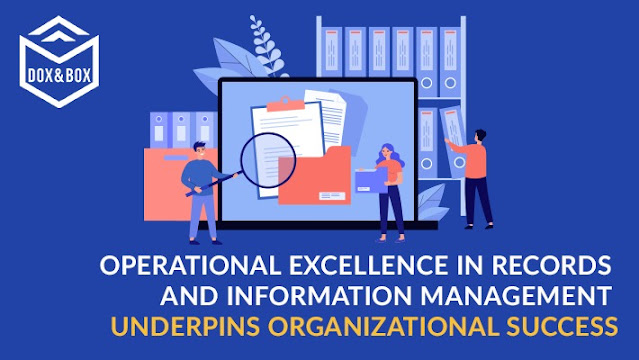Think Outside The Box: Overcome Your Hesitation To Destroy Physical Records
For decades, we've been putting off the inevitable by entrusting the decision-making concerning the deletion of legacy records that have met their preservation obligations to others. As personnel and systems come and go throughout the years, those judgments become increasingly more difficult to make, compounded by unavoidable organizational change, such as merger and acquisition activity.
There are a variety of reasons why we are hesitant to declare a record, file, or box of documents as eligible for document destruction: a lack of authority, the possibility of legal discovery, and, more recently, hidden value for analytics. But I believe there is a more fundamental hurdle to overcome: the time, energy, and resources required to filter through years of jumbled or incompletely recognized records.
Now is the moment to look outside the box and eliminate the ever-present risk of excessive record retention. Do you have a database or business management system where you may store information about your paper records? Do you have a record-keeping schedule in place? If you responded yes to both questions, Iron Mountain's Smart Sort solution is your chance to finally organise your records inventory, no matter where it's housed.
The advantages of a regular waste disposal programme
As part of your agency's comprehensive recordkeeping system, records destruction should be incorporated into your policies and procedures. This will assist you in:
● Lower the cost of storage
● Prevent issues with organizing and storing large amounts of data
● Determine which digital records require migration to new systems or storage mediums by utilizing your resources effectively.
● Identify records that have long-term worth to the company by lowering their volume
● To establish trust in company efficiency and to combat corruption
● Ensure that records are disposed of in a consistent, transparent, and timely manner.
Before you destroy records, make sure you've done the following:
● Have permission to dispose of the company's records
● Obtain the CEO's or an authorized delegate's approval.
● Verify that records are no longer required for continuing operations (talk to the relevant business area).
● Check to see if the records are needed for any RTI requests.
● Ensure that records aren't needed as evidence in any ongoing or pending legal proceedings (the destruction of evidence is an offence under the Criminal Code Act 1899).
● Verify that no disposal freezes for the records have been issued.
Checklist for Disposition Logs To generate an audit trail of paper and electronic records your office has destroyed, we recommend using a Disposition Log. Individually destroyed documents or files should not be documented; instead, records should be pooled and recorded according to their nature and function (i.e. Record Series) (PNG).
Records are disposed of at the company's Records Center
It is recognised that when boxes are transferred to the records centre:
● The contents of the boxes that departments submit for storage must be accurately identified and communicated.
● Boxes housed at the records centre will be shredded or recycled at no charge by Records Management Services.
● Our office will collaborate with the company to transfer archival records to the company Archives.
● Without explicit signed authority from the owner of the records, boxes stored at the records centre are not destroyed.
● The signatory is responsible for ensuring that the records in question are not on hold for destruction due to litigation, audit, or public records requests.
● Any eligible boxes for which the requisite signed disposition authorization has not been received will be returned to the originating office.
● All records stored at the firm that have been destroyed or transferred to the company Archives will be recorded in a disposition log maintained by Records Management Services.
The following information should be included in the Disposition Log at a minimum:
● Individual documents and file titles do not need to be listed.
● There is no need to include the title of individual documents or files on the log.
● Records should be indexed by Record Series.
● Consult the General Records Retention Schedule or the Retention Schedule for your Department.
● Dates for the destruction of documents, including records.
Destruction techniques
● Records must be destroyed securely.
● The best approach will be determined by the format and security classification of your records, as well as the ways available and whether or not you require a commercial destruction service.
● Records should be destroyed as quickly as feasible after the endorsement has been granted.
Records in physical form
There are three ways to destroy paper and physical records.
Shredding
● Select an approach that is appropriate for the document's sensitivity (e.g. use cross shredding in a 2 axis shredder for sensitive documents).
● Examine what happens to the shredded paper after it has been destroyed. There's a chance that lost documents will be rebuilt, especially if the material is recycled.
● Shredders in offices should only be used for shredding temporary and short-term records.
Pulping
● If done correctly, this is a safe technique of destruction.
Burning
● Records can be burned in an industrial incinerator, depending on the local climate (may be appropriate in regional areas if other methods of destruction are unavailable).
● Because of the risk of records being recovered or replicated, burying them is not an option.
● You can speed up the destruction of paper records, making your records management programme more compliant, efficient, and defendable.
To survey your inventory and determine destruction eligibility at the file level, your records management team should leverage information from your organization's database and records retention schedule. Reorganize your data by destruction eligibility year so that you can confidently delete material according to policy.
Source: https://www.doxandbox.com/blog-details/think-outside-the-box-overcome-your-hesitation-to-destroy-physical-records




Comments
Post a Comment